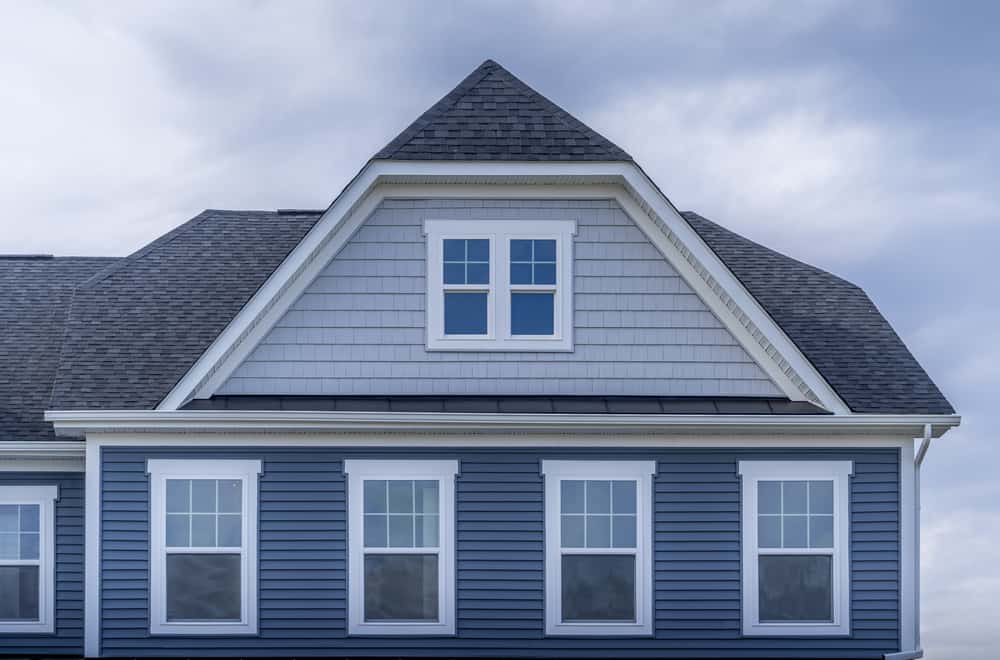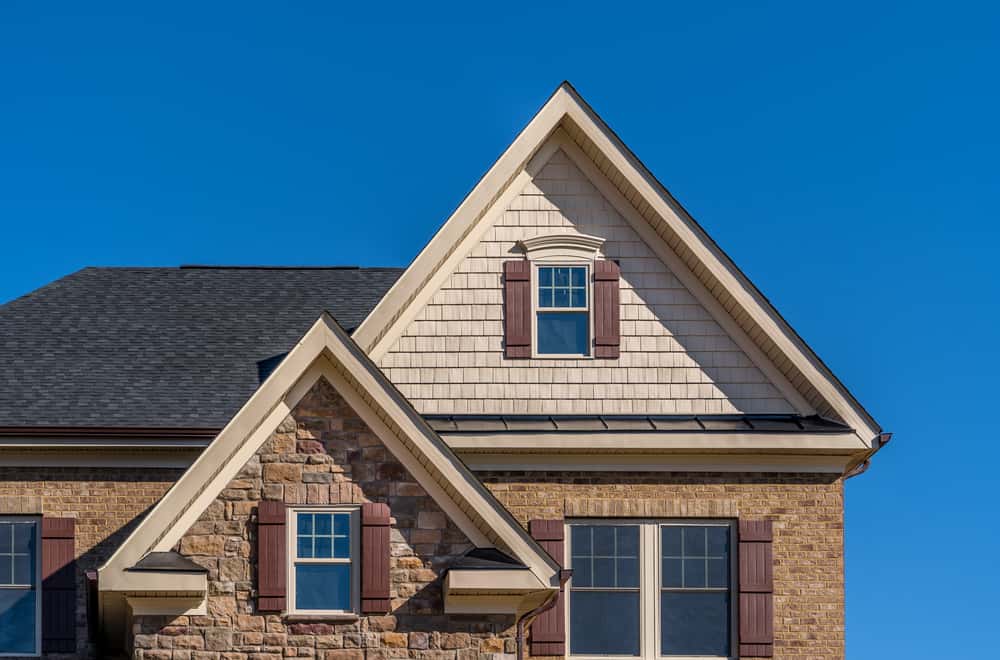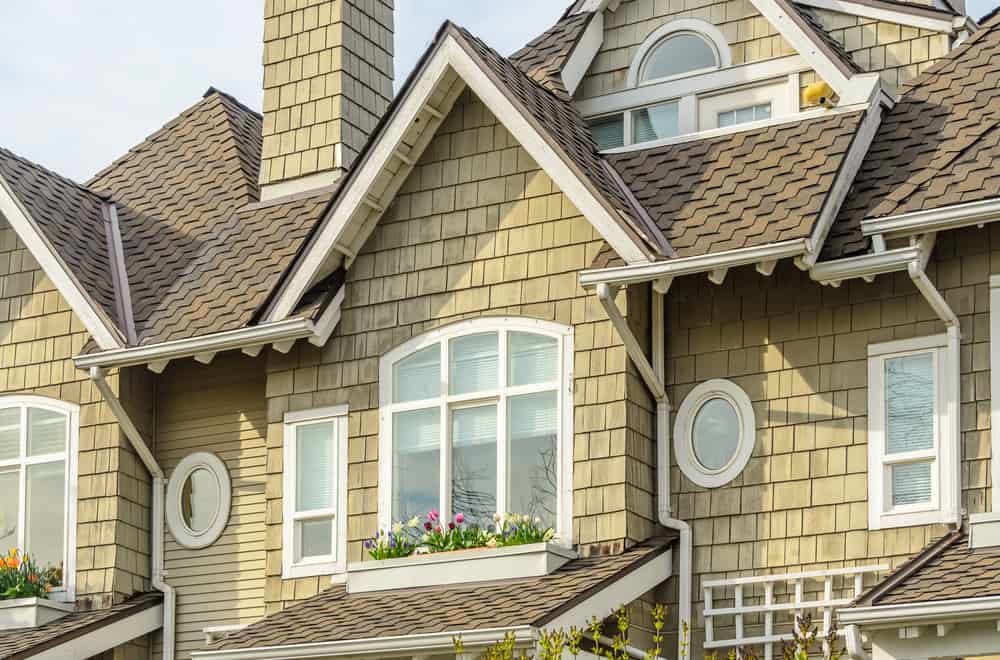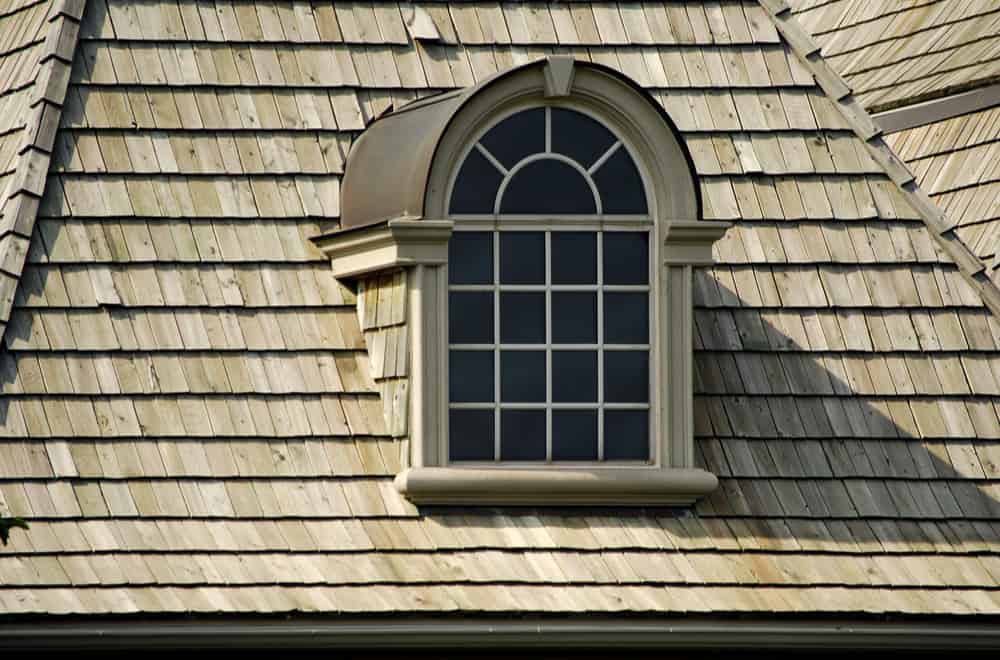Are you having trouble deciding between cedar shingles and vinyl shake siding for your home’s exterior?
Both cladding options serve the same purpose: to offer a layer of protection to your home. However, these similar products are different in price point, durability, appearance, and maintenance.
We will discuss the pros and cons of each of these materials throughout this article.
Table of Contents
What are Cedar Shingles?
As soon as I hear the word cedar, I immediately think of that welcoming scent I often associate with walking into an evergreen forest. Cedar trees originally grew in the mountainous areas of the Mediterranean and throughout the Himalayan Mountains of southern Asia.
Nowadays, cedar grows in both wild and cultivated forms around the world. The construction industry particularly acclaims cedar as a very durable softwood.
Firstly, cedar is easy to work with and maintains preferred building qualities, including “excellent noise abatement, insulation, and longevity.” In addition to this, cedar offers resilience to both moisture and pests, making it an excellent choice for roofs and siding alike.
Additionally, the Western Red Cedar produces an interesting chemical, thujaplicin, which turns out to be a natural fungicide. Thus, even a dead tree will last for hundreds of years in the forest.
In terms of siding, cedar offers a timeless and natural curb appeal that is difficult to mimic. In Particular, the Western Red Cedar native to the Pacific Coast of North America is a popular choice.
Because cedar offers long-lasting protection from the elements, you may choose to leave it untreated, or you can either stain or paint it based on your preference.
Lastly, cedarwood has a low density making it an excellent insulator.
Cedar shingles are a terrific building material that will last forever if appropriately maintained for many reasons above.
What is Vinyl Shake Siding?
Vinyl shake siding is a synthetic cladding material designed to mimic the aesthetics of traditional wood shake or shingle siding. In addition, vinyl shake siding is a highly durable polymer that can withstand harsh environments and climate changes.
You can best describe vinyl shake siding as “interlocking, overlapping, and weather-resistant panels;” they are the modern predecessor to traditional vinyl siding.
Manufacturers now design vinyl shake siding in various colors and textures that will last for decades with minimal maintenance.
Since vinyl shake siding is entirely weather-resistant, it cannot rot, nor will it peel or flake. However, proper insulation is critical to maintaining vinyl as a long-term investment.
Vinyl shake siding is usually less expensive than wood shingles, but factors to consider may include the number of additional components needed versus the type of wood used.
Cedar Shingles vs. Vinyl Shake Siding – Similarities
Essentially, both cedar shingles and vinyl shake siding are exterior cladding finishes offered to protect your home from the elements.
Cedar can be very energy efficient if installed correctly. However, it can be challenging to install and requires careful maintenance to ensure durability.
Vinyl is a light material but can withstand hurricane-force winds if installed according to code. In addition, its artificial composition renders it to be highly resilient to a variety of environmental factors.
With this in mind, perhaps the differences will better assist you in deciding between the two.
Cedar Shingles vs. Vinyl Shake Siding – Differences
Although vinyl shake design can imitate its natural counterpart, there are several differences to consider when it comes time for you to decide on your siding material.
1. Appearance
Let’s talk about appearance first. After all, curb appeal is a highly sought-after feature to have as a homeowner.
Cedar shingles can improve a home’s value more, but they will require more maintenance than vinyl. However, the classic style enveloped with the thought of cedar shingles is one of the main reasons people go with this choice.
Its timeless elegance makes cedar shingles (and most wood siding, for that matter) a popular choice for those who can afford it and commit to maintaining it.
Furthermore, you can give your home a unique look by painting or staining the cedar shingles. If you decide to do this, you will have to maintain the shingles’ health by repainting or staining every three to five years.
On the other hand, you can have vinyl shake siding designed and manufactured almost indistinguishable from wood. Therefore the old-age perception that vinyl has a ‘cheap’ look is not the case anymore.
Unless you held the two pieces up to your nose, it would be hard to tell the difference between cedar shingles and vinyl shake siding because, in their own right, both give that craftsman-style look that people so love.
Unless you are a die-hard fan of wood, you will have to consider much more than appearance alone as you begin to decide between the two materials.
2. Durability
The earliest versions of vinyl siding were brittle and quite temperamental. As a result, homeowners faced expensive repairs because their vinyl siding could not resist temperature change.
Today, things are different. The durability of vinyl, in general, makes it a preferred material for several applications. Vinyl has since become a consumer favorite for “cladding, window, roofing, fencing, decking, wallcovering and flooring applications,” according to BuildingWithChemistry.org.
Furthermore, vinyl does not rot or corrode and is entirely weather resistant. The color of your vinyl siding penetrates through the polymer composite of your vinyl during production.
Luckily for you, this means that there is no need for repainting your vinyl siding every few years; however, over time, you may still experience some fading due to sunlight exposure.
If you are looking for a long-term option that is durable with minimal maintenance, then vinyl siding is the way to go. Although a planned maintenance schedule is necessary for the upkeep of cedar shingles, this cladding option has also proven to be very durable.
The truth is, the durability of cedar shingles and vinyl shake siding is pretty much on par with a slight slant towards vinyl shake siding. The downside to cedar shingles is that wooden clapboard of any style can be known to attract birds, which can damage it. And at the end of the day, wood is wood; and, even with the best maintenance, it can still be susceptible to moisture damage.
3. Eco-Friendliness
Before we discuss price, I feel compelled to discuss the eco-friendliness of these two siding products briefly. Of course, you have to decide for yourself, but I will offer you some primary considerations.
Firstly, the polyvinyl chloride that comprises vinyl products is not suitable for the environment. Vinyl siding releases VOCs during its production, use, and disposal/recycling stages. After all, plastic is plastic!
On the other hand, cedar is an entirely renewable natural resource, provided manufacturers strictly adhere to forest protection measures. In addition, cedarwood is both environmentally friendly and biodegradable. So there’s less of an environmental concern once cedar siding has run its course than with the disposal of vinyl siding.
4. Price
HomeAdvisor lists the average cost of vinyl shake siding to be $6.50 per square foot, including labor and materials.
Cedar shingles cost between $6.00 and $10.00 per square foot for materials and installation. Price fluctuation will depend on several factors, including the quality of wood, the size of the planks, color change, the size of your house, installation, and maintenance.
Likewise, vinyl shake siding may vary in price due to vinyl grade, the size and shape of your house, the style and texture desired, and installation.
5. Maintenance
The secret to maximizing the warrantied lifespan of any siding solution lies in whether or not you adhere to the manufacturer’s recommended maintenance schedule.
A preferred advantage of vinyl siding is that maintenance needs are minimal. But you should still do your best to remove dirt and dust buildup regularly.
To do this, you can hose down your vinyl shake siding with a garden hose. For more stubborn areas of dirt, mold, or mildew, you can use a soft-bristle brush along with a bucket of warm water and a mild household detergent.
If too much time has lapsed between rinse-downs, you may need to go to your local hardware store and rent a pressure washer for the day to assist you in your cleaning efforts.
Cedar shingles can last decades with little to no maintenance. So, if you want your siding to age naturally, then you may choose this hands-off approach.
However, I bet you will want to keep them looking like the day you installed them, extending their lifespan much further. If this is you, then be careful to follow this concise maintenance schedule as prescribed:
- Clean your cedar shingles as recommended by the manufacturer.
- Apply a finishing coating such as paint or a solid-color stain; a semi-transparent stain; a natural finish such as a transparent stain; or an approved oil.
- Clean cedar shingle surface and reapply the moisture-resistant coating every three to five years, depending on weathering and personal situation.
NOTE: Before any step of the cleaning and refinishing process, please consult a trusted authority for advice on installation, cleaning, maintenance, and repairs.
* * *
No doubt about it, cedar shingles offer a classic look, are eco-friendly, and contain many self-preserving properties should you choose to allow it to age gracefully. However, if you want it to stay looking new, this option is more expensive in the long haul.
Don’t forget about vinyl shake siding. Its beautiful appearance, durability, weather resistance, and low maintenance make this material a big contender.
Finishing Touch
One of the final layers of protection for your home is the finishing surface that you choose to adorn your exterior walls.
We have explored critical attributes of both cedar shingles and vinyl shake sidings, such as appearance, durability, eco-friendliness, price, and maintenance.
But, before you decide on your cladding of choice, perhaps a visit to a local retailer would be a good idea so that you can see, feel and learn about the aging of each product in person.
Please feel free to comment below with any questions or concerns regarding your exterior cladding preferences.




